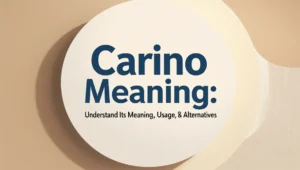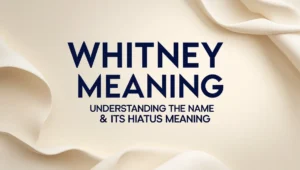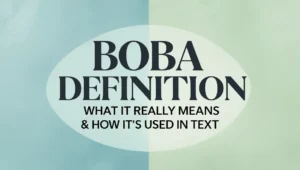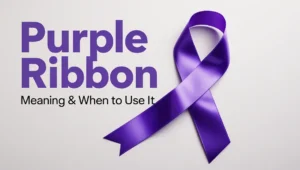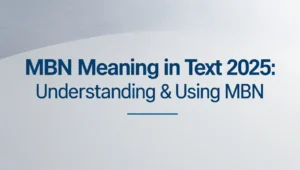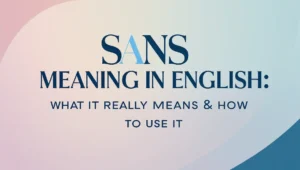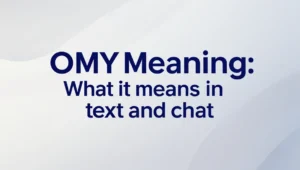Colors have always been more than just shades to our eyes—they carry emotions, values, and powerful meanings. Among the many symbolic colors, the purple ribbon meaning stands out as one of the most heartfelt and versatile. It’s not just a piece of fabric but a voice, a gesture, and a way of showing solidarity with people and causes that truly matter. From raising awareness about serious health conditions to representing strength against violence, the purple ribbon has become a global sign of empathy, courage, and hope.
In this guide, we’ll dive deep into what the purple ribbon meaning truly is, why it holds so much emotional power, and when you can use it in everyday life or campaigns.
Purple Ribbon Meaning in Awareness Campaigns
The purple ribbon is often used to represent multiple awareness causes, making it one of the most inclusive symbols of compassion. It is commonly linked to conditions like epilepsy, Alzheimer’s disease, and lupus, as well as advocacy for domestic violence survivors. Wearing or sharing a purple ribbon helps start conversations that educate people and bring light to struggles often ignored.
Purple Ribbon in Cancer Awareness
One of the most significant uses of the purple ribbon is in the fight against cancer. It represents pancreatic cancer, testicular cancer, and Hodgkin’s lymphoma, among others. For families and survivors, the purple ribbon is not just a symbol of illness—it becomes a beacon of courage, survival, and togetherness.
Purple Ribbon and Domestic Violence Awareness
When people see a purple ribbon pinned to clothing during Domestic Violence Awareness Month, it sends a message of strength and solidarity. It highlights the importance of safety, respect, and breaking the silence around abuse. The purple ribbon here becomes a symbol of healing and empowerment.
Purple Ribbon Meaning in Alzheimer’s Support
Alzheimer’s disease has deeply emotional impacts not just on patients but also on families and caregivers. The purple ribbon helps raise awareness about this progressive brain disorder and serves as a reminder of the resilience of those affected. It symbolizes love, memory, and support.
Purple Ribbon for Epilepsy Awareness
Globally, March 26 is observed as Purple Day for Epilepsy Awareness. On this day, people wear purple ribbons or outfits to show solidarity with epilepsy warriors. The ribbon here acts as a tool for spreading knowledge, acceptance, and compassion for individuals living with seizures.
Purple Ribbon in Animal Rights Advocacy
The fight against animal cruelty also carries the purple ribbon. Organizations and individuals use it to spread kindness toward animals and demand ethical treatment. It reflects a spirit of protection, compassion, and justice for all living beings.
Purple Ribbon Meaning in Mental Health Awareness
Mental health struggles are often silent, but the purple ribbon helps make them visible. It is associated with causes like anxiety, depression, and trauma recovery. For many, wearing a purple ribbon says: you are not alone, and healing is possible.
Purple Ribbon in Spiritual and Emotional Healing
Beyond medical and social campaigns, the purple ribbon has also become a sign of inner strength and healing. Purple as a color has long been tied to spirituality and growth. The ribbon, therefore, carries the energy of resilience, peace, and transformation.
Purple Ribbon in Religious and Cultural Practices
In some cultures, purple holds deep spiritual significance, often representing honor, sacrifice, and faith. During religious ceremonies or cultural movements, the purple ribbon may be used as a way to symbolize devotion and moral courage.
Purple Ribbon in Social and Community Movements
From fundraisers to peaceful marches, the purple ribbon often appears as a sign of community unity. It gives people a way to stand together for justice, healing, and support. It reminds us that when we come together, our voices become stronger.
Purple Ribbon in Memorial and Tribute Events
The purple ribbon is also used in remembrance ceremonies. Families and communities use it to honor the memory of loved ones who lost their battles to diseases, violence, or tragic circumstances. It symbolizes love that lives on forever.
Purple Ribbon for Children’s Advocacy
Children’s causes—such as anti-bullying campaigns, child abuse prevention, and children’s health awareness—also use purple ribbons. It stands as a promise of safety, kindness, and care for the younger generation.
Purple Ribbon Meaning in Gender Equality and Empowerment
Purple has long been tied to women’s rights and gender equality. The ribbon is often worn in support of equality movements, symbolizing strength, fairness, and empowerment. It connects individuals across the globe in the fight for justice and dignity.
Purple Ribbon in Global Health and Solidarity
As a globally recognized awareness tool, the purple ribbon transcends borders. Whether in health campaigns or humanitarian causes, it creates a sense of empathy and shared humanity, reminding us that compassion is universal.
Purple Ribbon in Daily Life
You don’t need a campaign or event to wear a purple ribbon. Many people wear it daily or share it digitally as a symbol of personal strength, remembrance, or support. It is a small gesture that carries deep meaning, reminding us of the power of love and solidarity in everyday life.
Conclusion
The purple ribbon meaning goes far beyond its simple look. It represents hope, courage, compassion, and unity across countless causes and communities. From cancer and epilepsy awareness to domestic violence prevention and animal rights advocacy, it has become a global emblem of empathy. The next time you see or wear a purple ribbon, remember that you’re part of a larger movement of kindness and resilience.
FAQs
1. What does the purple ribbon usually symbolize? It commonly represents causes like domestic violence awareness, epilepsy, Alzheimer’s disease, and cancer support.
2. Why was purple chosen for awareness campaigns? Purple represents strength, courage, and healing, which makes it powerful for emotional and social causes.
3. Is the purple ribbon used worldwide? Yes, it is recognized globally for health, social justice, and community awareness campaigns.
4. Can I wear a purple ribbon without attending an event? Absolutely. Many people wear it daily as a sign of personal support, remembrance, or solidarity.5. How can I help spread awareness using a purple ribbon? You can wear it, share it online, or use it in local events and conversations to educate and support others.


